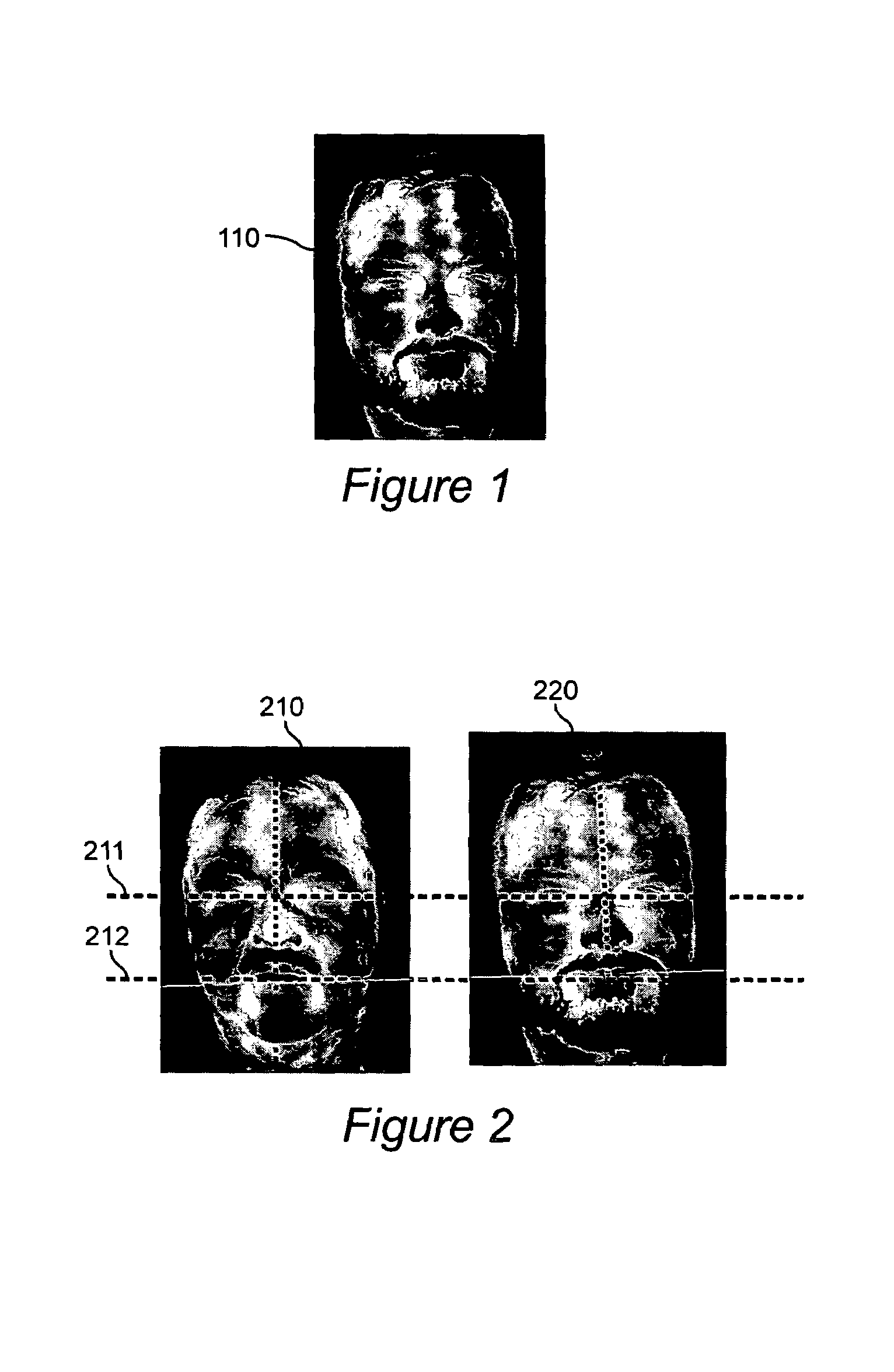Method and apparatus for operator condition monitoring and assessment
- Summary
- Abstract
- Description
- Claims
- Application Information
AI Technical Summary
Benefits of technology
Problems solved by technology
Method used
Image
Examples
first embodiment
Vehicle Operator Monitoring
[0137]It is an object of this invention to provide a method and apparatus for the realtime monitoring of vehicle operators to determine conditions which may interfere with their ability to successfully and safely control the vehicle, and to mitigate potential damage. Such conditions include: fatigue, inattention, inebriation, toxin exposure, diabetic shock, epileptic seizure, other medical traumas, and anxiety caused by physical ambush or emotional state.
[0138]Extensive driver fatigue studies performed under Department of Transportation auspices have demonstrated that time of day, duration of shift, sleep and cumulative sleep amounts, regularity of work schedule, and general health status all contribute to an individual's cognitive readiness. It has also been demonstrated that self-awareness of a person's level of fatigue or other incapacitance is surprisingly low. Although those studies involved truck drivers, the same conclusions are expected to relate t...
second embodiment
Monitoring Effectiveness of Persons Using Computer Displays
[0147]It is an object of this invention to provide performance quality monitoring of persons whose tasks require them to make rapid decisions based upon computer-generated displays. Reliable, error-free performance of interactive systems which scan airport baggage or computer networks which control air traffic is a serious concern. Monitoring the condition of the human operators of these systems is likewise an important use of ID-CMS. Commercial network security monitoring tools are available which map the network's topology and display network performance data for analysis. The network tool shows network activity and appends information on each terminal. It also shows both physical and virtual relationships; who contacts whom, communication paths, traffic flow and density.
[0148]During an attack on the network, the related activity can display an explosion of simultaneous problems—causing extreme stress to the network admini...
third embodiment
Monitoring Stress Level and Physical Condition of Emergency Response Personnel
[0161]It is an object of this invention to provide a method and apparatus for monitoring the health and safety of emergency response and military personnel. For these applications, the IR-CMS is man-portable and interfaced to a wearable computer with headset communications. The sensor head of the IR camera is separated from its electronics and battery, and is mounted on a helmet or headset from where it views at least a portion of the face.
[0162]The system monitors the wearer's face temperature and movements of the eyes and areas of the face including the mouth, nose, and eyebrows, as well as temperature and movements of anatomical subsurface features associated with physical activity (eating, talking, smoking, smiling, grimacing with exertion) and psychological state (pain, fatigue, drunkenness, sleep). The extracted observables are analyzed to assess whether the subject's status is within operating param...
PUM
 Login to View More
Login to View More Abstract
Description
Claims
Application Information
 Login to View More
Login to View More - R&D
- Intellectual Property
- Life Sciences
- Materials
- Tech Scout
- Unparalleled Data Quality
- Higher Quality Content
- 60% Fewer Hallucinations
Browse by: Latest US Patents, China's latest patents, Technical Efficacy Thesaurus, Application Domain, Technology Topic, Popular Technical Reports.
© 2025 PatSnap. All rights reserved.Legal|Privacy policy|Modern Slavery Act Transparency Statement|Sitemap|About US| Contact US: help@patsnap.com



